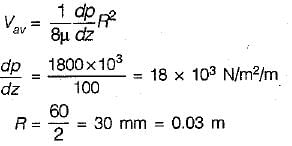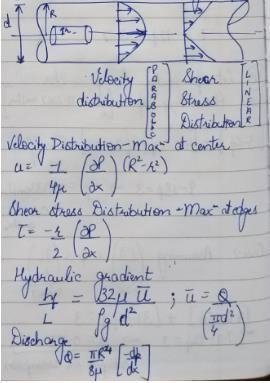Test: Laminar Flow in Pipes - 1 - Civil Engineering (CE) MCQ
10 Questions MCQ Test - Test: Laminar Flow in Pipes - 1
In a laminar flow between two static parallel plates, the velocity at mid-point is found to be 2.0 m/s. If the space between the plates is 10 cm, then the discharge per unit width (in m3/s/m) will be
An oil of viscosity 9 poise is flowing through a horizontal pipe of 60 mm diameter. If the flow is laminar, the pressure drop in 100 m length of the pipe is 1800 kN/m2. The average velocity of flow of the oil is
| 1 Crore+ students have signed up on EduRev. Have you? Download the App |
The Chezy's coefficient C is related to Darcy- Weisbach friction factor ‘f’ as
A circular pipe of radius R carries a laminar flow of a fluid. The average velocity is indicated as the local velocity at what radial distance, measured from the centre?
The velocity at which the laminar flow ceases, is known as
The ratio of maximum velocity to average velocity for steady flow between fixed parallel plates is:
The shear stress distribution for a fluid flowing in between the parallel plates, both at rest, is
The ratio of average velocity to maximum velocity for steady laminar flow in circular pipes is
Consider the following statements with reference to steady laminar flow
1. shear stress is zero at the centre.
2. discharge varies directly with viscosity of the fluid flowing.
3. velocity is maximum at the centre.
4. hydraulic gradient varies directly with the velocity.
Which of these statements is/are correct?
In a laminar flow through a circle pipe of diameter 20 cm, the maximum velocity is found to be 1 m/s. The velocity at a radial distance of 5 cm from the axis of the pipe will be





 (Darcy-Weisbach equation for non- circular section)
(Darcy-Weisbach equation for non- circular section)



 ......(ii)
......(ii)























